South India has a rich mix of history, culture, and natural beauty. It offers a warm welcome to travellers seeking to explore its heritage and landscapes. From ancient temple towns where traditions still thrive to quiet hill stations shrouded in mist, the region offers a journey through both time and nature.
Chennai City
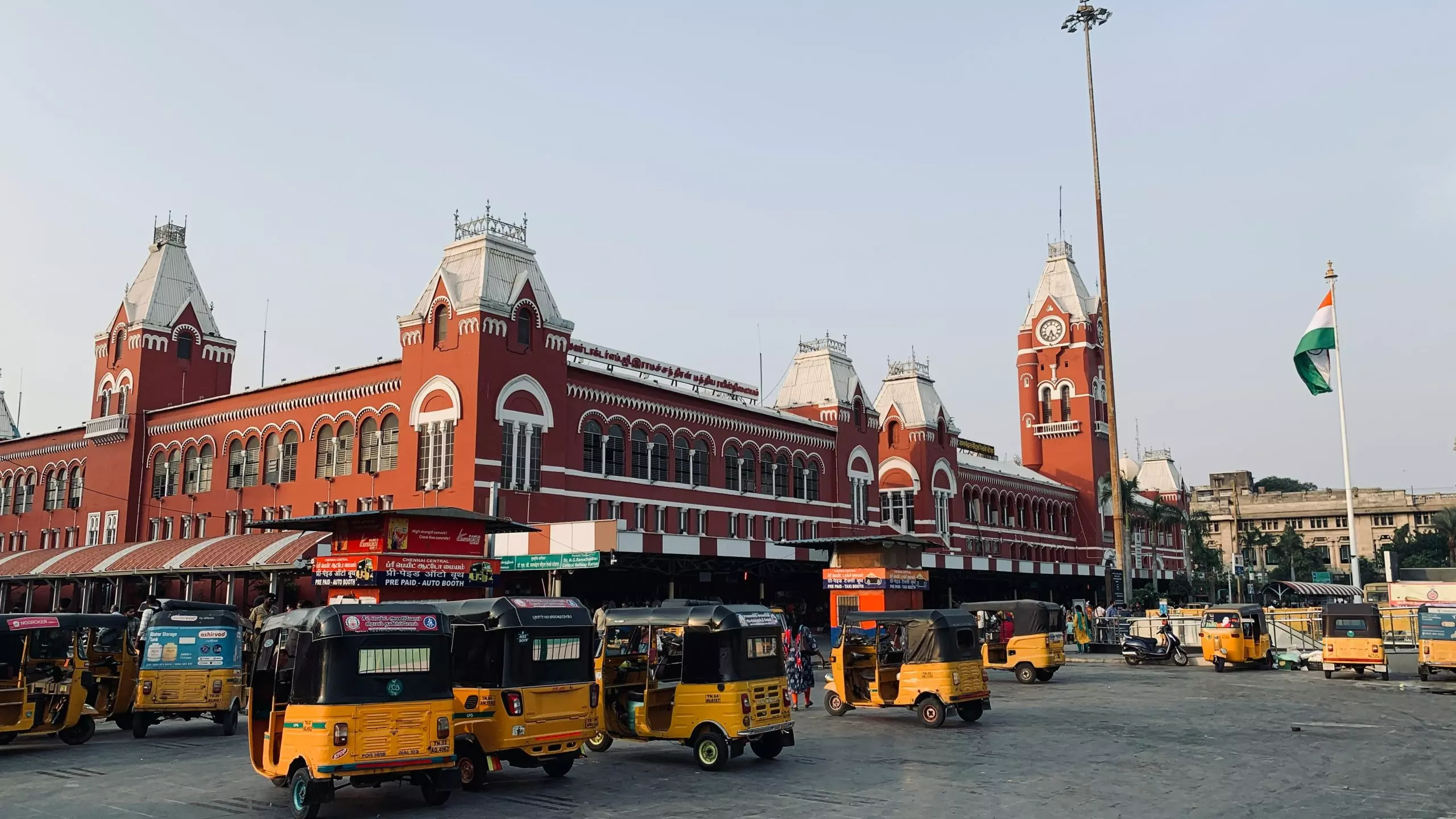 Through most of its history, known as Madras, Chennai was the first stronghold of the British in India and a key centre of their power in the south. In 1639, the East India Company obtained land to build Fort St. George under Francis Day and Andrew Cogan. Around this fort, which now houses the Tamil Nadu Legislative Assembly, the city of Chennai grew. It became the administrative and military base of the British in the region, shaping trade, culture, and governance. Fort St. George is considered the largest historical fort in the world, and St. Mary’s Church, within its walls, is the oldest Anglican church east of Suez.
Through most of its history, known as Madras, Chennai was the first stronghold of the British in India and a key centre of their power in the south. In 1639, the East India Company obtained land to build Fort St. George under Francis Day and Andrew Cogan. Around this fort, which now houses the Tamil Nadu Legislative Assembly, the city of Chennai grew. It became the administrative and military base of the British in the region, shaping trade, culture, and governance. Fort St. George is considered the largest historical fort in the world, and St. Mary’s Church, within its walls, is the oldest Anglican church east of Suez.
Architecture

Chennai is home to many architectural landmarks beyond the usual tourist attractions. Chennai Central Station, Egmore Railway Station, Madras High Court, as well as the Government Museum at Pantheon Road with its picturesque Museum Theatre, show the diversity of both British and Mughal styles, making the city a living historical archive. The buildings carry echoes of past glorious days, preserving treasures and stories that span centuries.
The city’s colonial legacy is also visible in its streets and structures, from the grand buildings along Marina Beach to the narrow lanes of George Town. Indo-Saracenic architecture, found in the High Court and Chennai Central, stands as a reminder of a time when architectural traditions were inspired by imperial ambition.
But the influence of the colonial era went beyond architecture. It shaped education, law, and governance, leaving a framework that still underpins modern Chennai. With this colonial layer resting on much older roots, the city presents a unique perspective on India’s long and complex past.
Chennai today is a place where old and new meet at every corner.
Old temples, such as Kapaleeshwarar, show the old pre-colonial Dravidian design, while Fort St. George, with the Fort Museum, belongs to the oldest part of the colonial chapter of India’s story. The coastline, crowned by Marina Beach, offers a serene space away from the traffic and bustle.
Markets, tea stalls, marriage halls, and other cultural venues fill the city with daily life and energy, making Chennai both a guardian of tradition and a thriving modern metropolis.
Dance and Culture
Every December, Chennai comes alive with the Music Season, when halls across the city resound with Carnatic concerts and Bharatanatyam performances.
It is one of the world’s largest cultural gatherings, drawing artists and audiences from near and far. The city’s food is quite exotic. From strong filter coffee to crisp masala dosas, from vegetarian delicacies such as palak paneer, to Kalyani biryani, Chennai offers an authentic taste of Tamil Nadu’s culinary heritage. More than a place to see, it is a city to experience, where history, culture, and community come together.
Alongside its traditions, Chennai is also a modern powerhouse. Together with Bengaluru and Hyderabad, it forms the heart of India’s IT industry. With a high number of universities and colleges, the city has a strong base of skilled professionals, often giving it an edge over its southern neighbours.
Valluvar Kottam – Poetry and Tamil Linguistic History
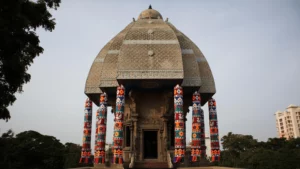
In the middle of Chennai stands the Valluvar Kottam, a striking monument built in the 1970s to honour the poet Thiruvalluvar. Its design is based on a traditional temple chariot, giving it both grandeur and a familiar feel. Inside, stone panels bear thousands of his verses from the Thirukkural, a classic work of poetry and wisdom written nearly two thousand years ago that remains central to Tamil thought and language. Tamil is one of the world’s oldest languages still spoken.
These teachings remain an integral part of daily life in Tamil Nadu, with children learning many of the verses by heart. A visit to Valluvar Kottam offers not just an architectural landmark, but also an insight into the deep roots of the Tamil language and culture.
Under the Banyan Tree in the Theosophical garden
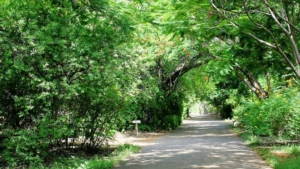
The Theosophical Society’s headquarters is located in Adyar in the southern part of Chennai in a quiet, large green park that feels far removed from the busy city life that surrounds it. It is home to an impressive library and a famous 450-year-old banyan tree, which is a landmark in itself. The buildings, blending Indian and colonial styles, provide a serene setting for study and reflection.
Alongside Chennai’s temples, forts, courts, and cultural halls, places like this shape the city’s varied skyline. Each of these landmarks tells part of the story, covering Chennai’s journey from one of the most important cities in the British Empire all the way to a modern, globally IT city that still holds fast to its traditions.
Dakshina Chitra
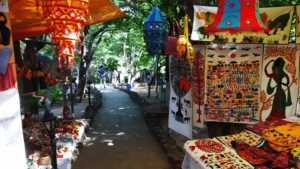
Just a short drive south of Chennai, Dakshina Chitra is a place that ensures that the history of South India is preserved. Inspired by the Swedish Skansen, it covers old houses and crafts of various cultures of South India. This living museum recreates the region’s traditions through carefully preserved houses, craft demonstrations, and folk performances.
Visitors can wander past the carved doorways of Tamil Nadu, see the graceful boats of Kerala, admire the weaves of Andhra Pradesh, and study the terracotta work of Karnataka.
More than just a collection of buildings, Dakshina Chitra preserves the skills, languages, and customs that risk fading in the modern world. It is both a celebration and a safeguard of heritage, giving travellers a chance to experience the living traditions of the south vividly and memorably.
Religious tolerance and coexistence
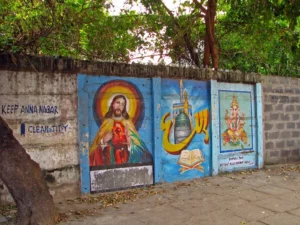
Chennai’s heritage is not only Hindu and colonial but also strongly Christian, shaped by the story of Apostle St. Thomas. According to tradition, he reached the shores of Tamil Nadu in 52 AD, and his presence left a lasting spiritual influence.
The city’s many churches reflect this history, with the San Thome Basilica standing out. Built over the site believed to hold St. Thomas’s tomb, its tall spires remain as a landmark of Chennai’s Christian history.
The city’s character has also been further shaped by Muslim, Malayalee, Telugu communities, and even by the Armenians, which, for a long time, was a very influential trading community. Each of these has added its own traditions and buildings.
Together, these diverse faiths and cultures have given Chennai a rich identity, where ancient customs coexist with the life of a modern and growing city. Photo McKay Savage
Safety in Chennai and Tamil Nadu

Chennai is known across India for being a safe place, with low crime rates compared to most other Indian cities. The air quality is also better here, adding to the sense of a calmer urban life. The launch of the Chennai Metro has made getting around far easier, offering a quick, clean, and modern way to travel across the city. Together, safety, cleaner air, and improved transport make Chennai one of India’s more liveable big cities.
At the heart of Chennai’s character lies Tamil culture, which instils in people a strong sense of identity that transcends religion and caste.
This unity has helped create a culture that feels united and welcoming, adding to the city’s reputation as a place where tradition and modern life blend with unusual harmony.
Temple Country
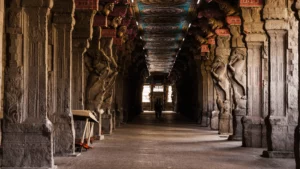 Tamil temples differ significantly from those in North India. Many are thousands of years old and still stand as living monuments. In Tiruchirappalli, the Rock Fort Temple stands tall on a rocky outcrop, a landmark that overlooks the city.
Tamil temples differ significantly from those in North India. Many are thousands of years old and still stand as living monuments. In Tiruchirappalli, the Rock Fort Temple stands tall on a rocky outcrop, a landmark that overlooks the city.
Further south in Madurai, the Meenakshi Amman Temple dominates the skyline with its soaring gopurams, richly carved and brightly painted. This vast complex is not only a masterpiece of Dravidian architecture but also the cultural heart of Tamil Nadu.
One of its towers is even featured in the state’s coat of arms, a mark of the temple’s enduring place in the region’s history and identity.
Tranquebar – A Danish spot in India
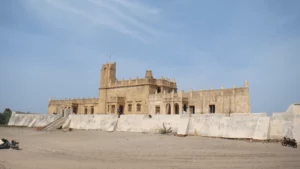
Tranquebar, once known as Tharangambadi or “Land of the singing waves,” is a small town on Tamil Nadu’s Coromandel Coast where the sea and history converge. The Danes arrived in the early 1600s, renamed their small colony Tranquebar, and established a trading outpost that flourished until it was later sold to the British. Their presence is still felt in the fort by the shore and in the colourful colonial buildings that line the streets, reminders of a time when European powers competed for influence in India.
Dansborg Fort, a compact but striking piece of Danish architecture, overlooks the Bay of Bengal. Around it, you find churches, cultural centres, and other colonial-era structures that continue to serve the local community.
For visitors, Tranquebar offers both quiet charm and a rich sense of history. It is an ideal place to step back into the past while enjoying a peaceful retreat by the sea.
Hill stations – British Summer residences and tea plantations
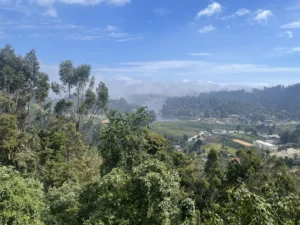
For those looking to escape into nature, the hill stations of Ooty, Kodaikanal, and Munnar still carry traces of their colonial past. First developed by the British as summer retreats from the heat of the plains, these towns remain popular for their cool climate, scenic beauty, and old-world charm.
Ooty, known as the “Queen of Hill Stations,” is known for its tea gardens and the narrow-gauge British, UNESCO World Heritage, Nilgiri Mountain Railway, locally called the “toy train.”, takes you through steep hills and eucalyptus forests, offering a slow and nostalgic journey through breathtaking landscapes. To manage
Kodaikanal, on the other hand, often referred to as the “Princess of Hill Stations,” is known for its tranquil lake, cascading waterfalls, and lush, flower-filled parks. Colonial cottages add to its charm, while the lively markets brim with handmade crafts and local produce.
Across the border in Kerala, Munnar combines natural beauty with a rich history of tea cultivation. Its plantations, begun by the British in the 19th century, continue to produce some of the world’s finest teas. The nearby Eravikulam National Park, home to the rare Nilgiri Tahr, makes Munnar as much a place for wildlife as for relaxation. Photo Anders Stenbäck
Tea Production and Tribes

The people of these hill stations are part of their unique charm. For example, in Munnar, local tribal communities play a key role in cultivating the tea plantations. Their customs and festivals also bring colour to the visitor’s experience. The people of these hill stations are part of their unique experience. In Ooty and Kodaikanal, indigenous tribes such as the Todas and Paliyans keep traditions alive that reach back far beyond the colonial era, offering a deep connection with the region’s past.
Taken together, South India’s hill stations are more than cool-weather retreats. They are places where history, nature, and culture meet. Each hill station tells its own story, it may be through tea estates, old British churches, forest trails, or just age-old traditions, making them ideal for travellers seeking both peace and perspective.
Wildlife – Tigers, Elephants, and jungles
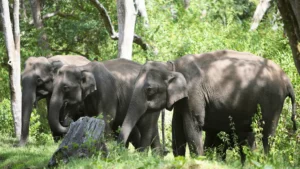
South India’s wildlife is as diverse as its culture, stretching far beyond the sanctuaries of Tamil Nadu. The forests of Mudumalai and Anamalai form part of the Nilgiri Biosphere Reserve and are among the best places to see the region’s rich animal life.
Mudumalai National Park lies at the meeting point of Tamil Nadu, Karnataka, and Kerala. One of the first reserves under Project Tiger, it is home to Bengal tigers, leopards, and several species of deer. For bird lovers, it offers sightings of more than 250 species, from the Malabar grey hornbill to the crested hawk-eagle.
Further south, the Anamalai Tiger Reserve—also called Indira Gandhi Wildlife Sanctuary—spreads across Tamil Nadu and Kerala. Herds of elephants are often seen around its lakes and grasslands, while its varied habitats shelter the rare lion-tailed macaque and the Nilgiri langur. Birdwatchers, too, will find plenty to enjoy in its forests and hills.
Wildlife Sanctuaries in the neighbouring states
In Kerala, the Periyar Wildlife Sanctuary is one of the Western Ghats’ great natural treasures. Famous for its large elephant herds, it is centred on a scenic lake where animals come to drink and bathe. Visitors can take boat rides for a chance to see wildlife from the water, including tigers, gaurs (Indian bison), and the striking Malabar giant squirrel.
Across the border in Karnataka, Bandipur National Park adjoins Mudumalai as part of the Nilgiri Biosphere Reserve. It is well known for its tiger and elephant populations, as well as packs of wild dogs, or dholes, often seen on the move together.
Together, these sanctuaries offer nature in many forms—from the quiet of an elephant at the water’s edge to the excitement of a tiger sighting on a forest track. With such a variety of landscapes and species, South India’s reserves give travellers the chance to experience some of the richest wildlife the country has to offer.
Mahabalipuram
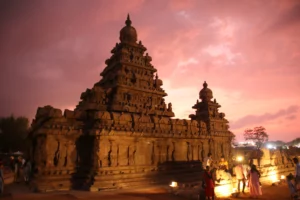 Just south of Chennai, Mahabalipuram is a UNESCO World Heritage Site that showcases the heights of Pallava art and architecture from the 7th and 8th centuries. The site is filled with wonders, from the giant boulder known as Krishna’s Butterball, which appears to defy gravity, to the Five Rathas, each carved from a single block of stone and displaying remarkable craftsmanship.
Just south of Chennai, Mahabalipuram is a UNESCO World Heritage Site that showcases the heights of Pallava art and architecture from the 7th and 8th centuries. The site is filled with wonders, from the giant boulder known as Krishna’s Butterball, which appears to defy gravity, to the Five Rathas, each carved from a single block of stone and displaying remarkable craftsmanship.
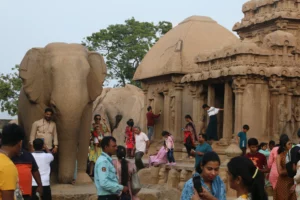
The Shore Temple, with shrines to both Shiva and Vishnu, reflects a rare spirit of harmony in a time when their followers were often divided. There is even a temple dedicated to Brahma, Vishnu, and Shiva together, symbolising unity across the Hindu pantheon. Walking among these monuments feels like stepping into stories told in stone, where devotion, artistry, and engineering come together.
The village itself adds to the experience. Resorts line the beach, where visitors can swim, surf, or sunbathe by the sea.
Fishermen go out before sunrise and bring in their catch each morning, and those curious about local traditions can head out on the “katta maram”, simple log rafts from which the word ‘catamaran’ is derived. Mahabalipuram is both a journey into India’s ancient past and a living coastal community where heritage and daily life meet. Photos Anders Stenbäck
Pondicherry
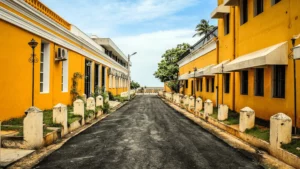
Just a short drive from Tamil Nadu, Pondicherry (or Puducherry) offers a change of pace with its blend of French elegance and Tamil warmth. Once a French colony, it still bears the marks of that past in its tree-lined boulevards, mustard-yellow houses, and streets with French names.
The French Quarter, with its bakeries, cafés, and heritage buildings, feels like it is part of another world, yet it sits comfortably alongside Tamil markets and temples. The nearby beaches contribute to the sense of calm, making it a popular escape from city life.
The French influence extends beyond architecture. It can be seen in the food, heard in the language, and felt in the town’s cosmopolitan spirit. Pondicherry is also a place of spiritual significance. The Sri Aurobindo Ashram attracts visitors from around the globe. At the same time, nearby Auroville continues to carry forward the vision of a community where people of all nationalities live together in harmony. Together, they make Pondicherry not just a historical curiosity, but a living experiment in culture and community.
Botanical Garden
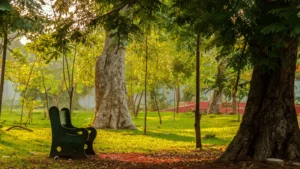
Pondicherry’s Botanical Garden is another highlight, with its collection of exotic plants and shaded avenues. It gained international fame through Yann Martel’s novel, Life of Pi, and the film adaptation, which set parts of the story on its grounds. This link has given the garden a special appeal for visitors, whether drawn by literature, cinema, or simply the love of nature.
With its French colonial charm, spiritual centres, and green spaces, Pondicherry offers far more than the usual tourist stop. It is a place where history, culture, and community come together, making it one of South India’s most distinctive and memorable destinations.
Kerala
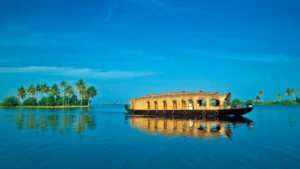
On the east coast, the Malabar Coast, Kerala is a narrow state that stretches along the shore like a ribbon of green coconut forests. Its backwaters, palm groves, and spice-covered hills make it one of India’s most distinctive landscapes. The quiet canals of Alleppey, the wildlife of Thekkady, and the misty slopes of Munnar together offer a mix of rest and adventure.
Called “God’s Own Country,” Kerala is famous for its houseboat cruises in Alleppey and Kumarakom, where travellers drift past villages, rice fields, and coconut groves. The state’s heritage comes alive in dance forms such as Kathakali and Mohiniyattam, in temple festivals, and in the carved architecture of its shrines.
The mountain range that stretches from the very south all the way along the eastern coast is called the Western Ghats, adding another dimension, with rainforests and sanctuaries like Periyar and Wayanad, home to elephants, birdlife, and various rare species. Kerala is also famous for Ayurveda, the ancient tradition of wellness that continues to draw visitors seeking rest and renewal. The local cuisine is another highlight, where the unique ingredients are coconut, rice, spices, and fresh seafood, all reflecting the state’s coastal character. Together, these elements make Kerala a place where culture and nature come together with ease.
Andaman Island

Far out in the Bay of Bengal, the Andaman and Nicobar Islands rise from the sea with white beaches, turquoise waters, and tropical forests. This chain of more than 300 islands is often seen as a quieter, more affordable alternative to the Maldives, yet just as rich in natural beauty. Coral reefs and marine life make it one of the best places in India for snorkelling and diving, while the stillness of its shores draws those simply looking for peace.
The islands also carry a historical weight. In Port Blair, the Cellular Jail stands as a stark reminder of India’s freedom struggle, adding a human story to the natural splendour. To get to the archipelago, you can go by air or by boat from Chennai. For travellers, the Andamans promise both escape and reflection, where history and nature meet in an unforgettable setting.
Sri Lanka
 Just an hour’s flight from Chennai, Sri Lanka offers a tropical escape that combines culture, history, and nature. Known as the “Pearl of the Indian Ocean,” the island is blessed with mountains, jungles, tea plantations, and beaches where visitors can surf, snorkel, or relax. Although not part of India, it is easily accessible from India, and for many European travellers, a visa on arrival makes access easy. The country is often seen as a less commercial and more affordable alternative to Thailand.
Just an hour’s flight from Chennai, Sri Lanka offers a tropical escape that combines culture, history, and nature. Known as the “Pearl of the Indian Ocean,” the island is blessed with mountains, jungles, tea plantations, and beaches where visitors can surf, snorkel, or relax. Although not part of India, it is easily accessible from India, and for many European travellers, a visa on arrival makes access easy. The country is often seen as a less commercial and more affordable alternative to Thailand.
Sri Lanka’s history stretches back over two thousand years and is reflected in sites such as Sigiriya, the dramatic rock fortress, and the ancient city of Anuradhapura. Colourful festivals and diverse cuisines highlight the blend of Sinhalese, Tamil, and other cultures that comprise the island’s identity.
Sri Lanka’s natural beauty is striking. The Central Highlands rise in misty mountain peaks, while the Sinharaja rainforest overflows with wildlife. National parks such as Yala and Wilpattu are known for elephants, leopards, and a rich variety of birds, making them especially rewarding for nature lovers. Along the coast, beaches such as Unawatuna, Hikkaduwa, and Mirissa range from peaceful coves to lively hubs for diving, whale-watching, and surfing. With such a broad spectrum of experiences, Sri Lanka appeals equally to those seeking relaxation and those chasing adventure.
Visiting South India
South India has no shortage of remarkable places to visit. Travel arrangements are generally easy to make online, whether by air, train, bus, or car, although journeys can sometimes be longer and city traffic can be heavy. Some areas are also less developed for tourism than destinations such as Thailand. Yet these challenges are more than outweighed by the rewards: breathtaking landscapes, a wealth of history, and warm encounters with people along the way.
Taken together, the south of India offers a rich mosaic of experiences. Each place adds its own colour and story, whether through architecture, culture, or nature. For travellers, it is a region that invites both discovery and reflection, a chapter of the Indian story that lingers long after the journey ends.
We have a separate page with more practical information you may want to know before visiting India.
Photos: Anders Stenbäck, McKay Savage, Public Domain